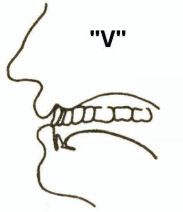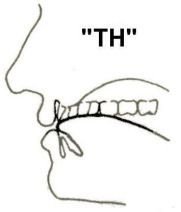

Voiceless Dental Non-sibilant Fricative - Term 1
The voiceless dental non-sibilant fricative is a type of consonantal sound used in some oral languages. It is familiar to English speakers as the 'th' in thing. Though rather rare as a phoneme in the world's inventory of languages, it is encountered in some of the most widespread and influential.
The dental non-sibilant fricatives are often called "interdental" because they are often produced with the tongue between the upper and lower teeth, and not just against the back of the upper or lower teeth, as they are with other dental consonants.
Among the more than 60 languages with over 10 million speakers, only English, Standard Arabic, European standard Spanish, Burmese, and Greek have the voiceless dental non-sibilant fricative. Speakers of languages and dialects without the sound sometimes have difficulty producing or distinguishing it from similar sounds, especially if they have had no chance to acquire it in childhood, and typically replace it with a voiceless alveolar fricative (/s/), voiceless dental stop (/t/), or a voiceless labiodental fricative (/f/; known respectively as th-alveolarization, th-stopping, and th-fronting).
A voiceless alveolar fricative is a type of fricative consonant pronounced with the tip or blade of the tongue against the alveolar ridge (gum line) just behind the teeth. This refers to a class of sounds, not a single sound. There are at least six types with significant perceptual differences: Voiceless alveolar "hissing" sibilant [s], with a strong hissing sound, as in English sin. One of the most common sounds in the world because of its highly piercing, prominent sound (hence its use to get people's attention, as in "ssssst!").
The sound is known to have disappeared from a number of languages, e.g. from most of the Germanic languages or dialects, where it is retained only in English and Icelandic.